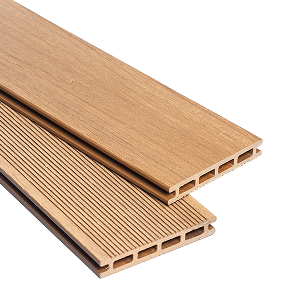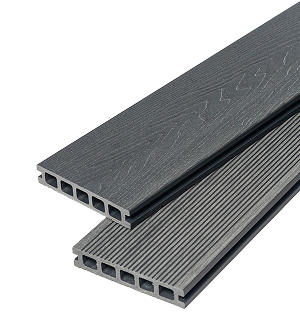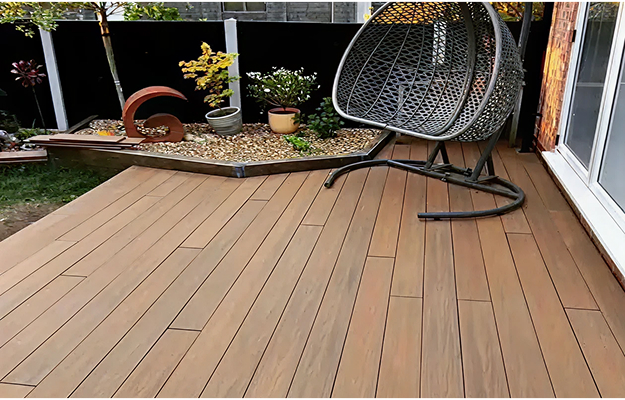
Navigating the Composite Decking Market: How to Choose the Best Brand for Your Project


This has led many to ask: have the modern alternatives like composite and PVC decking solved this problem?
The answer is yes, but their performance does vary.
To provide a definitive answer, we need to look at the data. The industry standard for testing slip resistance is the Pendulum Test Value (PTV). The key information about PTV test results which you need to know is that a score of 36+ is considered a low slip risk.
Below, we will compare the slip resistance of each main decking type, based on our own internal testing and market data
| Decking Type | Typical PTV Score (Very Wet) | Slip Risk Classification |
|---|---|---|
| Composite (Grooved) | 34 - 36+ | Low Risk |
| Composite (Wood Grain) | 50+ (Estimated) | Low to Medium Risk |
| PVC (New Generation) | 50+ (Estimated) | Very Low Risk |
| Wood (with Anti-Slip Strips) | 45+ | Low Risk |
| Wood (Standard) | 25-35 | Medium Risk |
| Plastic (HDPE) | Varies (often high risk) | Medium to High Risk |

Modern composite decking offers good to excellent slip resistance right from installation. Its performance, however, depends on the surface finish.
From our own internal testing—which we perform in extremely wet conditions to reflect the reality of the British weather—we’ve found the following:
Our best-performing grooved boards achieve an excellent 45 PTV.
Our premium wood grain boards achieve a 36+ PTV, also in the low-risk category.
Our classic wood grain boards achieve a 34 PTV, which is on the borderline between low and medium risk.
Expert Tip: Delta E measure the change in colour to the highest standards compared to grey scaling, put simply, if Delta E was a measurement it would be the change in the mm. It’s the most accurate testing on colour change done in EN standard.

Standard wooden decking is well-renowned for becoming very slippery, especially when wet. This issue worsens significantly over time as moisture encourages the growth of mould and algae on the surface.
A typical wooden deck has a PTV score in the medium-to-high risk range (0-35). While regular, intensive maintenance can help, it will always be a challenge. However, there is a solution:
Anti-Slip Strips: These are resin-and-aggregate strips that can be fitted into the grooves of timber boards. They vastly improve slip resistance, often achieving a PTV score of 45+, which is a great result.

Historically, PVC decking had a smooth surface that wasn’t great in the wet. However, newer generation PVC decking, which is growing in popularity in the USA, has seen huge advancements.
Manufacturers like AZEK in the US report up to a 40% improvement in slip resistance compared to other composite products. This would give new-generation PVC an estimated PTV of 50 or higher, placing it firmly in the very low slip risk category.

It’s important to distinguish PVC from generic, 100% HDPE plastic decking. While HDPE is extremely durable, it is often manufactured with a very smooth, non-textured coating. This makes it prone to being slippery when wet. While it won’t grow mould, its surface texture itself does not offer good grip.
Expert Tip: Delta E measure the change in colour to the highest standards compared to grey scaling, put simply, if Delta E was a measurement it would be the change in the mm. It’s the most accurate testing on colour change done in EN standard.
If slip resistance is a primary factor in your decision, our recommendation is to choose either high-quality composite decking or new-generation PVC.
is a proven, tested material in the UK market. A grooved or textured composite board offers excellent, low-risk performance that is significantly safer than traditional wood.
appears to be the future market leader in slip resistance, with outstanding performance data coming from the US. However, a potential drawback for some homeowners may be its higher cost and more “manufactured” appearance compared to composite.
Ultimately, both modern composite and PVC provide a safe, reliable surface that gives you and your family peace of mind for years to come.

Navigating the Composite Decking Market: How to Choose the Best Brand for Your Project